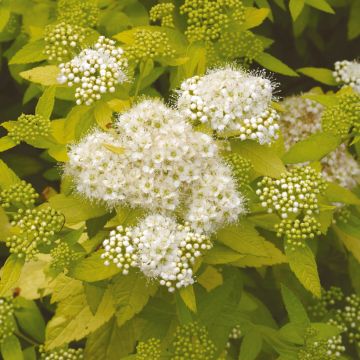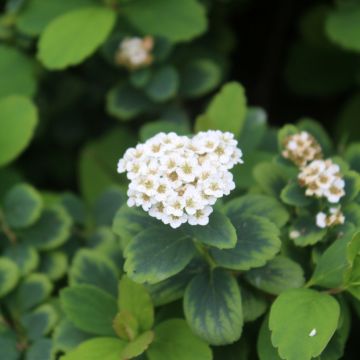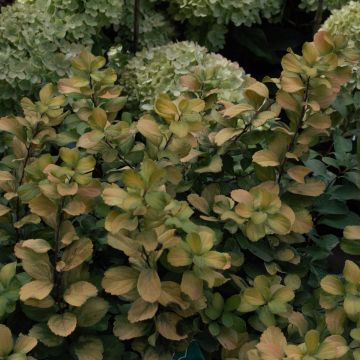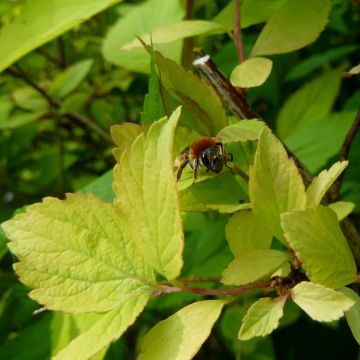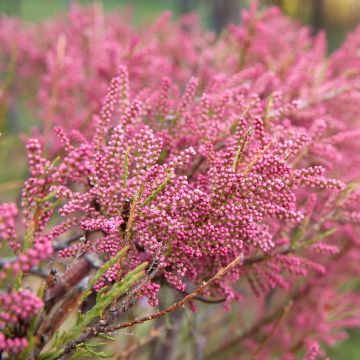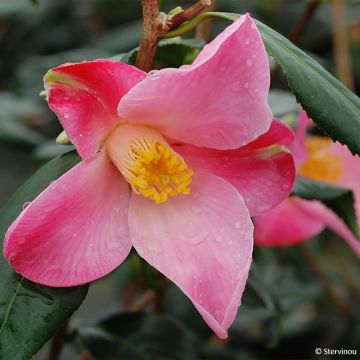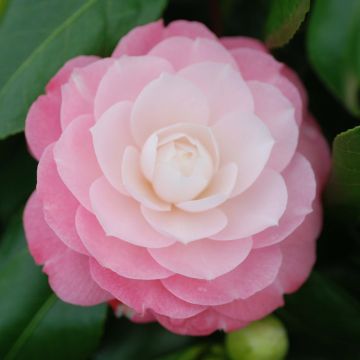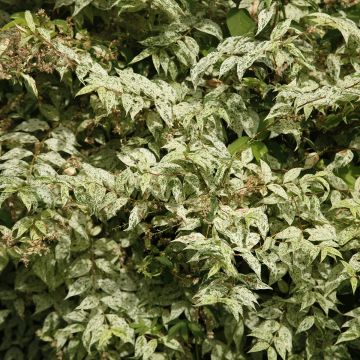

Spiraea chamaedryfolia - Spirée à feuilles de petit-chêne


Spiraea chamaedryfolia - Spirée à feuilles de petit-chêne
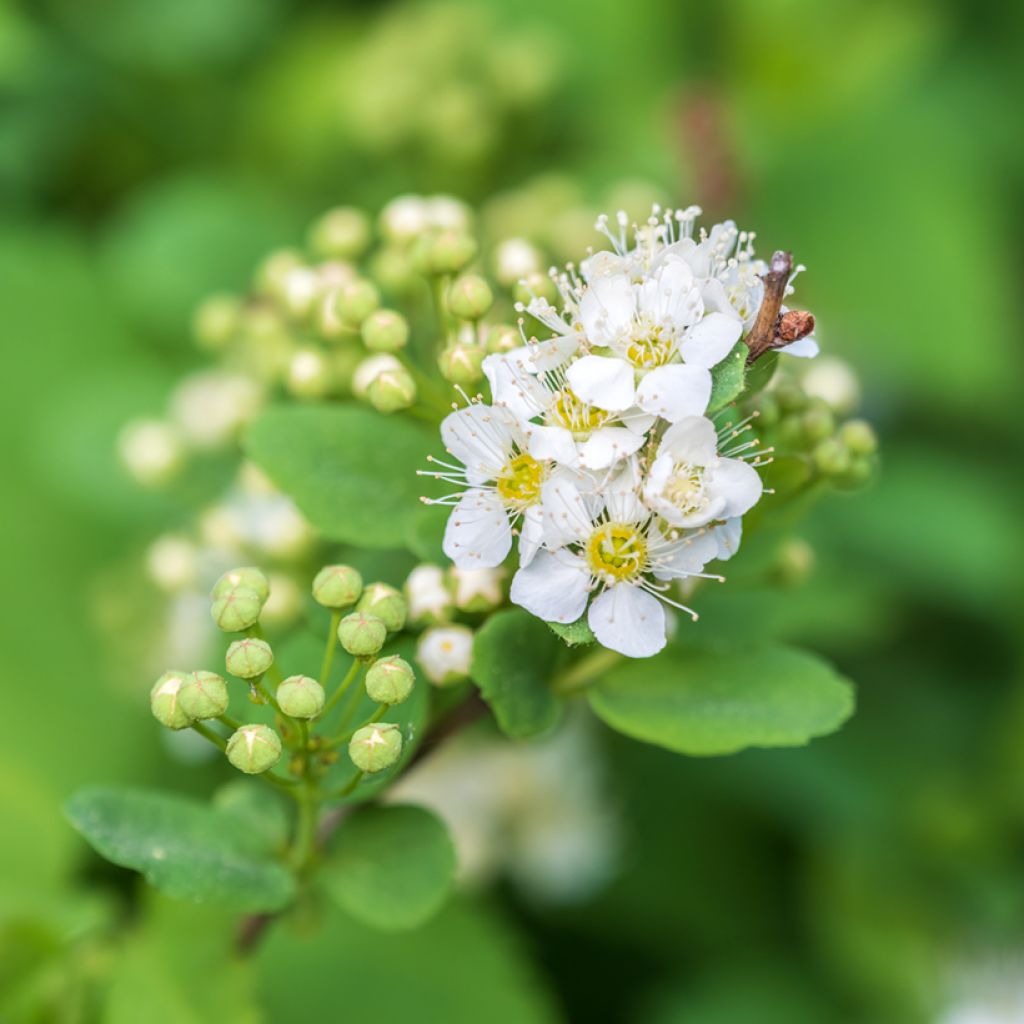

Spiraea chamaedryfolia - Spirée à feuilles de petit-chêne


Spiraea chamaedryfolia - Spirée à feuilles de petit-chêne
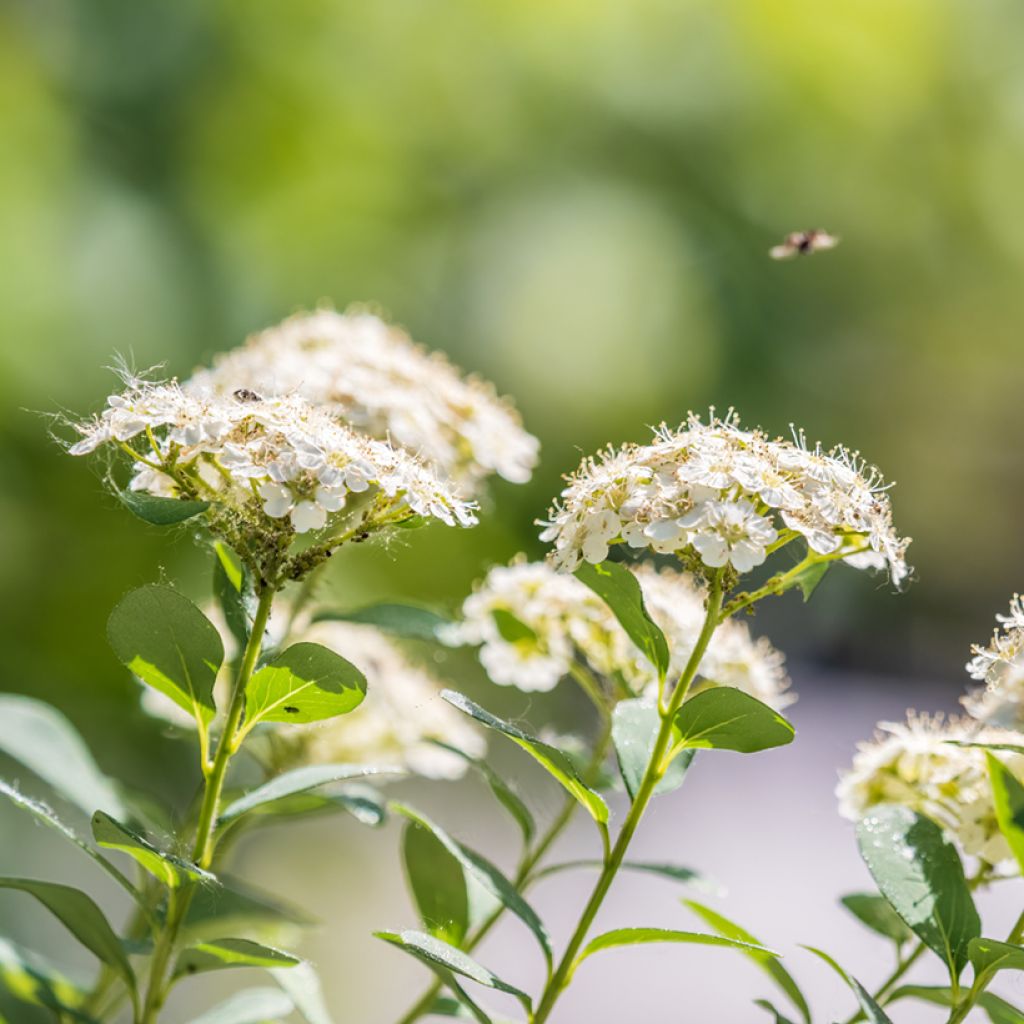

Spiraea chamaedryfolia - Spirée à feuilles de petit-chêne
Spiraea chamaedryfolia
Spiraea chamaedryfolia
Lesser Spirea, Elm-leaved Spirea
Why not try an alternative variety in stock?
View all →This plant carries a 24 months recovery warranty
More information
We guarantee the quality of our plants for a full growing cycle, and will replace at our expense any plant that fails to recover under normal climatic and planting conditions.
From €7.90 for pickup delivery and €6.90 for home delivery
Express home delivery from €8.90.
Does this plant fit my garden?
Set up your Plantfit profile →
Description
The Spiraea chamaedryfolia, also known as the Oakleaf Spirea, or more rarely Elmleaf Spirea, is a small bush that requires very little and is ideal in the countryside or a natural garden. Exceptionally hardy, unaffected by cold or dryness, it adapts to less poor soil. Beautiful in early summer with its white flower clusters, it delights the gardener again with its beautiful autumn colours. Plant this spirea in large shrub beds or a small hedge in all our regions.
The Spiraea chamaedryfolia belongs to the Rosaceae family. It is a deciduous bush that slightly suckers and originates from southeastern Europe and temperate Asia. Its tendency to escape from gardens is reported in several countries. This spirea does well near the edge of forests and likes drier conditions on limestone soil with plenty of sunlight. These adaptable spireas are excellent choices for gardens, and this one is no exception.
It is a bushy shrub supported by long, slender, upright branches that are brownish to reddish-brown in colour. It grows rapidly, reaching an average of 1.25 m (4ft) in all directions in 3 to 4 years. The abundant flowering usually starts in May-June and can extend until September. The tiny white flowers are grouped in small clusters called corymbs at the ends of the branches. The Oakleaf Spirea has simple, oblong or lanceolate leaves, toothed at the edges, measuring 4 to 6 cm (2in) long and 1 to 3 cm (1in) wide. They are bright green and will turn lovely orange colours in autumn before falling.
Hardy, undemanding, and requiring very little maintenance, this lovely white spirea will adapt to all climates. It can be used in beds, as a solitary plant, in groups, and in small flowering hedges. To create a small spring bed, it can be paired with Berberis thunbergii Rose Glow, Prunus triloba multiplex, Prunus x cistena, Ribes sanguineum, and white, pink, orange, or even red Japanese quinces, which are also sturdy and undemanding plants.
Spiraea chamaedryfolia in pictures
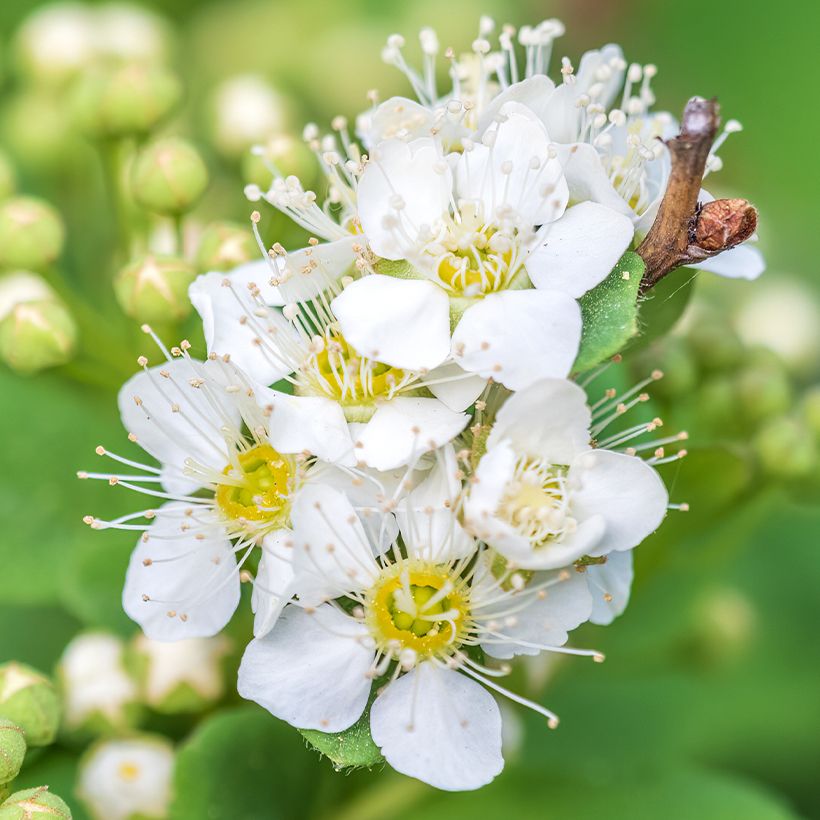



Plant habit
Flowering
Foliage
Botanical data
Spiraea
chamaedryfolia
Rosaceae
Lesser Spirea, Elm-leaved Spirea
Southern Europe
Other Spiraea
Planting and care
Plant the Oakleaf Spirea (Spiraea chamaedryfolia) in any well-worked and loosened soil, even limestone. The soil should still be sufficiently deep, especially in dry soil in the summer. This low-maintenance bush will thrive in full sun or partial shade. To maintain the vigour of the young plant, it is vital to remove old branches at the base in spring. Light pruning may be necessary after flowering, removing half of the length from faded shoots. This plant flowers on the previous year's branches. Apply a complete fertiliser every year in March. Water regularly to aid establishment, especially in dry and hot weather during summer. Once well established (after 2 to 4 years), this spirea will manage on its own and will not require watering. It has excellent cold resistance and few enemies in the garden, except for a few aphids. In a natural garden without chemical treatments, aphids do not cause significant damage as natural predators such as ladybirds and hoverflies will control them.
Planting period
Intended location
Care
This item has not been reviewed yet - be the first to leave a review about it.
Spring-flowering shrubs
Haven't found what you were looking for?
Hardiness is the lowest winter temperature a plant can endure without suffering serious damage or even dying. However, hardiness is affected by location (a sheltered area, such as a patio), protection (winter cover) and soil type (hardiness is improved by well-drained soil).

Photo Sharing Terms & Conditions
In order to encourage gardeners to interact and share their experiences, Promesse de fleurs offers various media enabling content to be uploaded onto its Site - in particular via the ‘Photo sharing’ module.
The User agrees to refrain from:
- Posting any content that is illegal, prejudicial, insulting, racist, inciteful to hatred, revisionist, contrary to public decency, that infringes on privacy or on the privacy rights of third parties, in particular the publicity rights of persons and goods, intellectual property rights, or the right to privacy.
- Submitting content on behalf of a third party;
- Impersonate the identity of a third party and/or publish any personal information about a third party;
In general, the User undertakes to refrain from any unethical behaviour.
All Content (in particular text, comments, files, images, photos, videos, creative works, etc.), which may be subject to property or intellectual property rights, image or other private rights, shall remain the property of the User, subject to the limited rights granted by the terms of the licence granted by Promesse de fleurs as stated below. Users are at liberty to publish or not to publish such Content on the Site, notably via the ‘Photo Sharing’ facility, and accept that this Content shall be made public and freely accessible, notably on the Internet.
Users further acknowledge, undertake to have ,and guarantee that they hold all necessary rights and permissions to publish such material on the Site, in particular with regard to the legislation in force pertaining to any privacy, property, intellectual property, image, or contractual rights, or rights of any other nature. By publishing such Content on the Site, Users acknowledge accepting full liability as publishers of the Content within the meaning of the law, and grant Promesse de fleurs, free of charge, an inclusive, worldwide licence for the said Content for the entire duration of its publication, including all reproduction, representation, up/downloading, displaying, performing, transmission, and storage rights.
Users also grant permission for their name to be linked to the Content and accept that this link may not always be made available.
By engaging in posting material, Users consent to their Content becoming automatically accessible on the Internet, in particular on other sites and/or blogs and/or web pages of the Promesse de fleurs site, including in particular social pages and the Promesse de fleurs catalogue.
Users may secure the removal of entrusted content free of charge by issuing a simple request via our contact form.




































